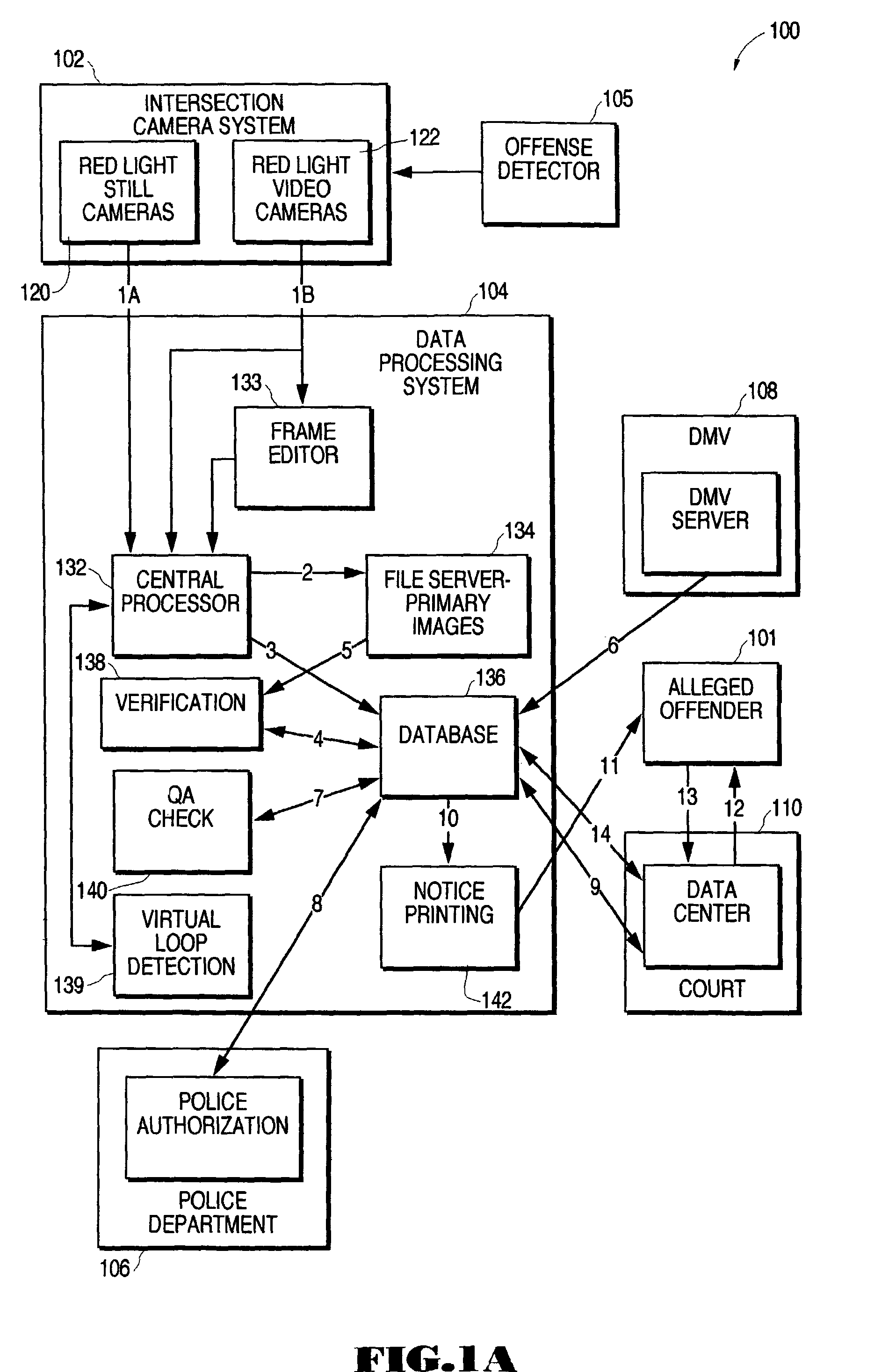Automated traffic violation monitoring and reporting system with combined video and still-image data
a traffic violation and video and still image technology, applied in the field of automated traffic violation monitoring and reporting system, can solve the problems of not being able to facilitate efficient automation and validation of photographs, not showing the acceleration and speed of vehicles, and still images typically not conveying enough information, so as to achieve the effect of reducing the requirements of data transfer and storag
- Summary
- Abstract
- Description
- Claims
- Application Information
AI Technical Summary
Benefits of technology
Problems solved by technology
Method used
Image
Examples
Embodiment Construction
[0044]An automated system for monitoring and reporting incidences of traffic violations utilizing both still and video camera systems is described. In the following description, for purposes of explanation, numerous specific details are set forth in order to provide an understanding of the present invention. It will be evident, however, to those of ordinary skill in the art that the present invention may be practiced without the specific details. In other instances, well-known structures and devices are shown in block diagram form to facilitate explanation. The description of preferred embodiments is not intended to limit the scope of the claims appended hereto.
[0045]FIG. 1A is a block diagram that illustrates the overall traffic violation processing system, according to one embodiment of the present invention. The main components of the traffic violation processing system 100 comprise the intersection camera system 102, an offense detector system 105, the data processing system 104...
PUM
 Login to View More
Login to View More Abstract
Description
Claims
Application Information
 Login to View More
Login to View More - R&D
- Intellectual Property
- Life Sciences
- Materials
- Tech Scout
- Unparalleled Data Quality
- Higher Quality Content
- 60% Fewer Hallucinations
Browse by: Latest US Patents, China's latest patents, Technical Efficacy Thesaurus, Application Domain, Technology Topic, Popular Technical Reports.
© 2025 PatSnap. All rights reserved.Legal|Privacy policy|Modern Slavery Act Transparency Statement|Sitemap|About US| Contact US: help@patsnap.com



